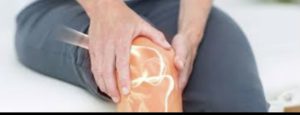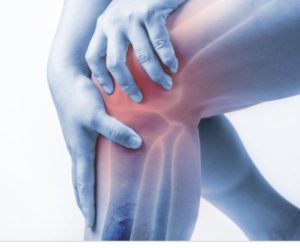CORE Physical Therapy In Omaha Explains…
By Dr. Mark Rathjen PT DPT CSCS
CORE Physical Therapy Co-owner
17660 Wright Street Suites 9/10
Omaha, NE 68130
The hip is intimately related to the knee. The knee is the support structure above, much like the ankle below. Whatever forces the hip cannot control from body control, the knee will absorb.
Often, we see it clinically as the main contributor to knee pain. At times, its a lack of hip mobility issues, as in squatting or Olympic lifting. With running and jumping, weakness is the main issue. Often, the medical knee dive that is controlled by the hip abductor and external rotation isn’t strong enough to handle force absorption. The knee in turn is forced to absorb it. A slightly complicated hinge joint like the knee, is not design to handle such medial and rotational forces.
We often see weakness as a contributor to medial knee pain, IT band insertion pain, and ACL tears. Without a strong support structure, the knee will always give out first. Knee replacements are performed 5-1 over hip replacements. The hip is one of the reasons its so high.
What does that mean to me?
1#You need proper hip mobility in the hip flexors, and external rotators, adductors, and glutes.
2# Mobility should be symmetrical from side to side. Asymmetries will always lead to issues, imagine if you inflated your car tires on the drivers side to 20, and inflated the other side to 40. Imagine that wear pattern on the tires. You may blame the tire for being defective, but it’s not the tires fault. It was the asymmetry.
3#Proper strength for all muscles of the hip, hip flexors, glutes, external rotators, etc. Squats are not enough, lunges are not enough, they engage the supporting muscle of the hip in an isometric contraction only. Squats do not work the hip flexors at all. We need to continue our squats, lunges and deadlifting, but add in isolated but functional glute, adductor and external rotator work.
Where do I start?
Find a good sports Physical Therapist (CORE ) that specializes only in sports and sports performance. DO NOT go to a one stop shop or generalist. They will NOT be trained in this specialty.
Get an evaluation, get a plan that addresses the issue, work on it, and ENJOY getting rid of knee Pain forever…
. 2018 Jan;48(1):19-31.
doi: 10.2519/jospt.2018.7365. Epub 2017 Oct 15.
Hip and Knee Strengthening Is More Effective Than Knee Strengthening Alone for Reducing Pain and Improving Activity in Individuals With Patellofemoral Pain: A Systematic Review With Meta-analysis
- PMID: 29034800
- DOI: 10.2519/jospt.2018.7365
Abstract
Study Design Systematic review with meta-analysis. Background The addition of hip strengthening to knee strengthening for persons with patellofemoral pain has the potential to optimize treatment effects. There is a need to systematically review and pool the current evidence in this area. Objective To examine the efficacy of hip strengthening, associated or not with knee strengthening, to increase strength, reduce pain, and improve activity in individuals with patellofemoral pain. Methods A systematic review of randomized and/or controlled trials was performed. Participants in the reviewed studies were individuals with patellofemoral pain, and the experimental intervention was hip and knee strengthening. Outcome data related to muscle strength, pain, and activity were extracted from the eligible trials and combined in a meta-analysis. Results The review included 14 trials involving 673 participants. Random-effects meta-analyses revealed that hip and knee strengthening decreased pain (mean difference, -3.3; 95% confidence interval [CI]: -5.6, -1.1) and improved activity (standardized mean difference, 1.4; 95% CI: 0.03, 2.8) compared to no training/placebo. In addition, hip and knee strengthening was superior to knee strengthening alone for decreasing pain (mean difference, -1.5; 95% CI: -2.3, -0.8) and improving activity (standardized mean difference, 0.7; 95% CI: 0.2, 1.3). Results were maintained beyond the intervention period. Meta-analyses showed no significant changes in strength for any of the interventions. Conclusion Hip and knee strengthening is effective and superior to knee strengthening alone for decreasing pain and improving activity in persons with patellofemoral pain; however, these outcomes were achieved without a concurrent change in strength. Level of Evidence Therapy, level 1a-. J Orthop Sports Phys Ther 2018;48(1):19-31. Epub 15 Oct 2017. doi:10.2519/jospt.2018.7365.
Keywords: anterior knee pain; muscle strength; patellofemoral pain syndrome; rehabilitation.
Similar articles
-
J Orthop Sports Phys Ther. 2018 Jan;48(1):33. doi: 10.2519/jospt.2018.0502.PMID: 29291280
-
Anterior Knee Pain: What Muscles Should I Strengthen?
J Orthop Sports Phys Ther. 2018 Jan;48(1):32. doi: 10.2519/jospt.2018.0501.PMID: 29291282 -
J Orthop Sports Phys Ther. 2010 Nov;40(11):736-42. doi: 10.2519/jospt.2010.3246.PMID: 21041965 Clinical Trial.
-
J Sport Rehabil. 2015 Nov;24(4):428-33. doi: 10.1123/jsr.2014-0184. Epub 2014 Oct 29.PMID: 25365356 Review.
-
Exercise for treating patellofemoral pain syndrome.
Cochrane Database Syst Rev. 2015 Jan 20;1:CD010387. doi: 10.1002/14651858.CD010387.pub2.PMID: 25603546 Review.C.O.R.E. Physical Therapy and Sports Performance PC,
17660 Wright St, Suites 9/10
Omaha, NE 68130
402-930-4027
At CORE Physical Therapy in Omaha, We specialize in the treatment of athletes. We have worked with athletes for a combined 30 years.
This is who are, This is what we do.
Owned and Operated
by
Dr. Mark Rathjen and Dr. Claire Rathjen.
CORE is a family owned business
est. 2015
We are proud to serve the greater Omaha metro area.
For More information, Please feel free to contact us https://coreomaha.com/contact/
Please feel free to follow us at https://www.facebook.com/COREomaha/
To get started https://coreomaha.com/getting-started/
For more Blog information https://coreomaha.com/blog/
Youtube Account linked below.
https://www.youtube.com/channel/UCVg8OSN5h-i1n_ykw1Gvahg?view_as=subscriber


